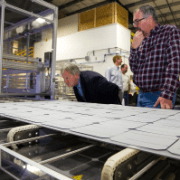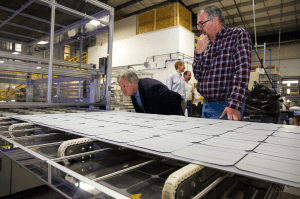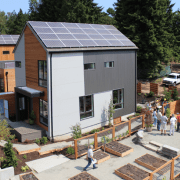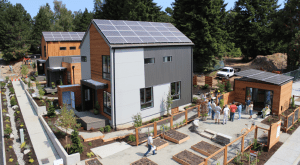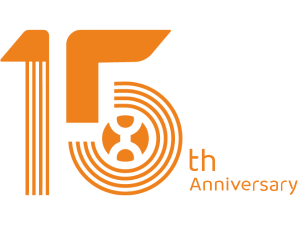by RICHARD WALKER, North Kitsap Herald Editor
posted Nov 22, 2013 at 12:36 PM— updated Nov 22, 2013 at 2:41 PM
POULSBO — There are several incentives for Washingtonians to go solar.
Residential and commercial property owners with a “Made in Washington” solar array may be eligible for a check up to $5,000 per year for the power their panels put into the grid. At the same time, their power bill is reduced by the amount of power they produce.
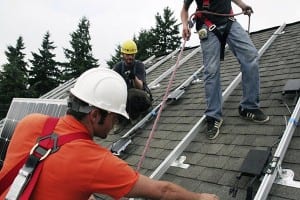 Put a solar array onto your home, and you may qualify for a credit of up to 30 percent of the cost from the federal government.
Put a solar array onto your home, and you may qualify for a credit of up to 30 percent of the cost from the federal government.
Installation of solar-energy systems in Washington is exempt from sales and use taxes.
With the incentives in place today, a new solar-energy system can pay for itself in five to seven years. After that, money from all the power you generate goes into your pocket. (And you can periodically watch your meter run backwards.)
“With some of the most progressive incentives in the nation, the return on investment for Washington residents today is real and substantial,” said Tim Bailey, co-founder of Blue Frog Solar. “Working together, our state has made solar a smart buy.”
Those incentives are driving consumer investment in solar-energy systems for homes and businesses in Washington state — and driving the success of a Poulsbo-based manufacturer and distributor of solar energy equipment.
Before we go on, here’s a simplified explanation of how a solar energy system works. An array of photovoltaic panels — on your roof or on groundlevel open space — captures energy from sunlight (even when it’s cloudy). Energy goes from the panels to a microinverter, which converts the energy into AC current. That energy supplements the electricity you use from Puget Sound Energy.
When you produce more electricity than you use, that electricity is made available for use elsewhere, and PSE buys it from you.
Blue Frog Solar, 1015 Hostmark St., manufactures and distributes inverters. Working with a network of certified installers, Blue Frog Solar designs solar-energy systems for homes and businesses using APS America’s inverter technology and Itek Energy’s photovoltaic panels — all made in Washington to qualify for the financial incentives.
Click here to read more –>
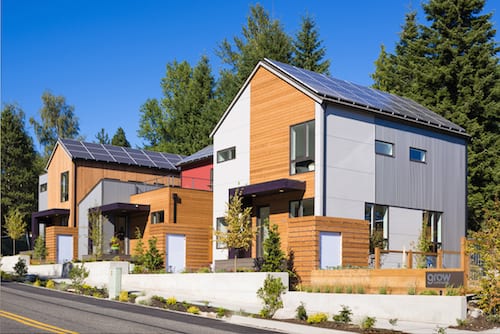

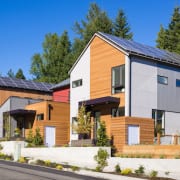
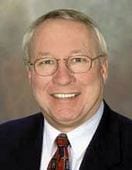
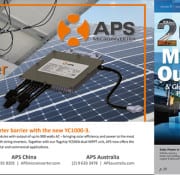

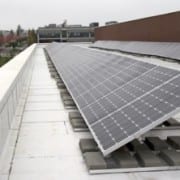
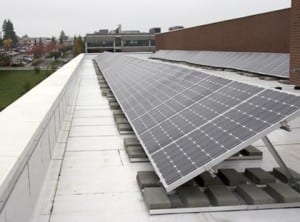 The three-story, 72,000-square-foot building is home to EvCC’s nursing, medical assisting and phlebotomy programs, as well as other health sciences training. It also houses an expanded Providence Everett Healthcare Clinic, featuring 20 exam rooms, and the college’s Criminal Justice program.The solar project is a locally-made enterprise: The solar modules were made by Itek Energy of Bellingham, and the inverters came from APS America in Poulsbo.A large monitor in the main-floor lobby of Liberty Hall will display real-time information about power generation from the array, demonstrating to visitors that solar energy is a viable resource right here in Snohomish County.
The three-story, 72,000-square-foot building is home to EvCC’s nursing, medical assisting and phlebotomy programs, as well as other health sciences training. It also houses an expanded Providence Everett Healthcare Clinic, featuring 20 exam rooms, and the college’s Criminal Justice program.The solar project is a locally-made enterprise: The solar modules were made by Itek Energy of Bellingham, and the inverters came from APS America in Poulsbo.A large monitor in the main-floor lobby of Liberty Hall will display real-time information about power generation from the array, demonstrating to visitors that solar energy is a viable resource right here in Snohomish County.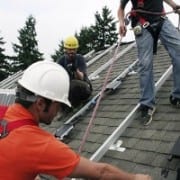
 Put a solar array onto your home, and you may qualify for a credit of up to 30 percent of the cost from the federal government.
Put a solar array onto your home, and you may qualify for a credit of up to 30 percent of the cost from the federal government.